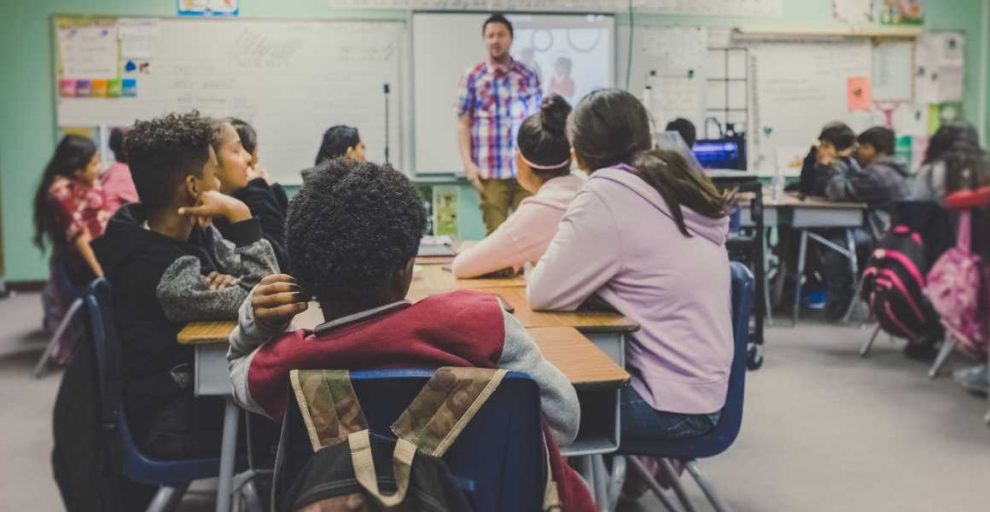People cannot live without each other, we are social beings. As soon as we are in contact with others we are communicating. We are always saying something even when we are not saying a word. Communication is the process of sharing ideas, information, and messages with others in a particular time and place. Communication includes writing and talking, as well as nonverbal communication. This art of expressing and exchanging ideas is a vital part of personal life and is important in everyday life, in business, education, and any other situation where people encounter each other.
Apart from language, which is the basic means of communication, people all over the world use their hands, heads, and bodies to communicate expressively. Body language is a language without spoken words and is therefore called nonverbal communication. This kind of communication tells us something about the relationship between people. Without body language, our world would be static and colourless. Several investigators estimate that at least 70% of the communication between people takes place through body language and tone of voice. The best-known theory is that of the American psychologist Albert Mehrabian. He states that when it comes to expressing feelings:
-
55% of the communication consists of body language,
-
38% is expressed through tone of voice and only
-
7% is communicated through words.
In that case, we express 93% of our feelings in a non-verbal way! Gestures and body language communicate as effectively as words – maybe even more effectively. We use gestures daily, almost instinctively, and it is essential for all of us to become more sensitive, more aware, and more observant to the motions, gestures, and body language that surround us each day. ‘Reading signals’ is especially important in classroom teaching, where true communication is essential for effective learning, motivation and development.
TEACHER-STUDENT RELATIONSHIP
Being a teacher is a responsible profession. Apart from the pleasure it gives, when the teacher successfully fulfills his role and betters both the knowledge and personality of his students, teaching can sometimes be a frustrating job. This usually happens when there is lack of motivation, resistance to learning, little attention given to the teacher or even animosity toward the teacher. Having all this in mind, one question is inevitable: what is the difference between teaching which is successful and teaching which is ineffective? The answer to the question is quite simple: true communication between the student and the teacher. True teacher-student relationship implies cooperation, sincerity and mutual respect.
Since both the students and the teacher are humans, they are prone to make mistakes. However, there are widespread beliefs and myths concerning an ‘ideal teacher’. Some of them say that a good teacher is always in a good mood, calm, never showing strong feelings or opinions, never annoyed or unhappy even if there is a good reason to feel that way. Also, it is assumed that good teachers do not have the prejudice of any kind, nor do they have favourites. They are consistent, they never change, they never forget anything, they do not make mistakes, they know all the answers, they are wiser than the students.
However, the truth is quite the opposite. To be a human means to be inconsistent – different and unpredictable. The popular myths about an ideal teacher demand that teachers deny their humanity. If teachers try to fit into these misconceptions, they will soon find it hard to hide their true feelings and frustrations. Non-verbal behaviour will betray them. The consequence is obvious: the students will start raising doubts about the teacher’s sincerity and reliability. Every message that teachers send nonverbally reveals their opinion about the student or the matter discussed. The same is true for the students themselves. Nonverbal behaviour shows our hidden thoughts and emotions and people can feel deceived if there is a disparity between what they see and what they hear. Nonverbal communication will reveal so many emotions and feelings which words cannot and will not express.
On the whole, it is not only what teachers say in the classroom that is important, but also how they say it that can make the difference to students. Nonverbal messages are an essential component of communication in the teaching process.
Teachers should be aware of nonverbal behaviour in the classroom for three major reasons:
- An awareness of nonverbal behaviour will allow them to become better receivers of students’ messages.
- They will become better senders of signals that reinforce learning.
- This mode of communication increases the degree of the perceived psychological closeness between teacher and student.
MAJOR CATEGORIES OF NONVERBAL BEHAVIOR
Nonverbal communication is better known as body language. Nonverbal communication includes facial expressions, tones of voice, gestures, postures, eye contact, spatial arrangements, touch, expressive movement, clothes, and other “nonverbal” acts. Research suggests that nonverbal communication is more important in understanding human behaviour than words alone – the nonverbal “channels” seem to be more powerful than what people say.
We start forming impressions of people we meet from the moment we set eyes on them. A large part of the initial impression that we create comes from our body language. Body language plays a big role in intuition as it gives us messages about the other person that we can interpret at an intuitive level. It is, therefore, necessary to learn about our body language so that we can recognize it in others as well as in ourselves.
Body communication has been studied under the general name of kinesics. Usually, body language occurs unconsciously. However, it can also be used deliberately and the body language that we decide to use determines to a large extent the quality of our communication. It follows that therefore it would be good to become conscious of our own and others’ body language. We can learn to use our body language for a purpose. As well as learn to understand and interpret the body language of others.
Body language is used especially to express feelings. For instance, if we do not like someone, it is often difficult to say that directly to the person. However, we can make it clear either intentionally or unintentionally through body language. The opposite is also true. We may say that we ARE angry through words yet our body language may be saying loud and clear that we are NOT. This can be very confusing for the receiver. This is usually described as giving out double messages – one message in words and an opposite message in body language. It is also difficult to lie or cover up our feelings through body language. People may give their true feelings away by not being aware of their body language. Research has shown that most people pay more attention to, and believe more readily, their impression of how a person acts through body language than what is said through words. As a consequence, we tend to doubt, or put a question mark behind, the spoken words if they do not correspond with the language of the body.
Facial Expression
The most important zone to “read” for emotions is the face. Facial expressions are perhaps the most important nonverbal way in which emotions are manifested. They communicate a mood, attitude, opinion, feeling, or other messages by contracting the muscles of the face. We can express feelings of hate, fear, enjoyment, sadness and other primary human feelings to other people, without having to learn it. The understanding of emotions that are expressed via body language is probably also hereditary.
We have 80 muscles in our face that can create more than 7,000 facial expressions. The first major scientific study of facial communication was published by Charles Darwin in 1872. Darwin concluded that many expressions and their meanings are universal. There are around six main types of facial expressions that are found in all cultures:
happiness – round eyes, smiles, raised cheeks;
disgust – wrinkled nose, lowered eyelids and eyebrow, raised upper lip;
fear – around eyes, open mouth;
anger – lowered eyebrow and an intense stare;
surprise – raised eyebrow, wide-open eyes, open mouth;
sadness – the area around mouth and eyes
Among many facial gestures, the smile, the worldwide sign of friendliness and approval, seems to deserve special attention. It is the simplest and most obvious language of the body. A smile shows affection and conveys politeness. It transmits happiness, warmth, liking and affiliation. It is particularly important to those who work with people to be conscious of the body language and remember to smile once in a while. This is especially true for teachers because nonverbal messages are essential for successful communication in the teaching process. According to studies, persuasive communicators exhibit more animated facial expressions and more gestures to emphasize their points.
On the whole, if teachers smile frequently, they will be perceived as more likeable, friendly, warm and approachable. Smiling is often contagious and students will react favourably and learn more.
Eye Contact
Another form of nonverbal communication is eye contact. The eyes are always talking and eye contact is a direct and powerful means of communication. A poet and writer of 19th-century France wrote, ‘Eyes are so transparent, that through them, one sees the soul.’ Since the eyes are windows on the soul, it is, therefore, necessary to learn something more about it.
It is very important for teachers to be good at noticing and understanding what is happening or what their students are thinking and feeling. Eye contact may be the best indicator of a person’s involvement in a situation. For example, a teacher can always tell when students do not know an answer in-class discussion. They look down at their notes, stare out the window, or fix their shoelaces – but they never look the teacher in the eye.
This important channel of interpersonal communication helps regulate the flow of communication. It is important because insufficient or excessive eye contact may create communication barriers. It is also important in relationships because it serves to show intimacy, attention, and interest in others. In a conversation, too little eye contact may be seen negatively because it conveys lack of interest, inattention, or even mistrust. The relationship between mistrust and lack of eye contact is stated directly in the expression, “Never trust a person who can’t look you in the eyes.” Nothing builds trust and rapport as effectively as eye contact.
Therefore, teachers who make eye contact open the flow of communication and convey interest, concern, warmth and credibility. Eye contact is essential to building rapport with someone. It brings to life the essence of emotion, attraction, confidence, and acknowledgement. Attentive eye contact would convey honesty, straightforwardness and approachability.
Gestures
Gestures, posture and space relationship are some of the types of body language to be aware of. Gestures can be used purposefully to emphasize meaning. Fidgeting shows boredom and restlessness. Pressing fingers together to form a steeple shows interests, assertiveness and determination. Touching the nose or rubbing eyes indicates discomfort, or it may even be a signal that one’s character is not being completely honest. A hand to the back of the neck may indicate withdrawal from a conversation.
Hands gestures are also very expressive. Open gestures tend to make us appear open and honest. By pointing our fingers, or moving our hands closer together, we can draw emphasis to what we are saying. Used in moderation, hand gestures can make us seem enthusiastic and committed to our topic. Making too many gestures can make us appear nervous and uncontrolled. Wringing our hands or touching our sleeves, face, etc. can make us appear tense, nervous, and sometimes dishonest.
If teachers fail to gesture while speaking, they may be perceived as boring, stiff and unanimated. A lively and animated teaching style captures students’ attention, makes the material more interesting, facilitates learning and provides a bit of entertainment. Head nods, a form of gestures, communicate positive reinforcement to students and indicate that the teacher is listening.
Body Posture
The way we hold ourselves, our body posture , makes a big contribution to our body language and conveys our level of self-confidence. By orienting our body towards someone, we show attentiveness. By falling away from them or leaning back, we show a lack of interest and some level of reserve. When we are feeling low in confidence and want to hide away, we hunch our shoulders and keep our heads down. When we are feeling aggressive or are trying to defend our space, we puff ourselves up.
Our posture gives signals about our interest in something, our openness, our attentiveness and our mood. For instance, a lot of people feeling sad will give that information by the way they hold their shoulders. Not only do we see it in their body posture, shoulders sagging and head down, but also in the way they have very little eye-contact. They say to the world in fact that they are not interested in their environment nor the people in it. Our body posture often reflects quite well how we feel.
Another feeling we can communicate with our body posture is one of respect for someone else. Turning our body to someone when they are talking to us indicates that we are interested in hearing what they have to say. It is an act of friendliness and respect and often rewards itself when we get it back from the other person. A small effort in this way can make the difference between being accepted by others or not.
A body posture can be closed or open. Someone who does not feel too comfortable when they are with someone else will often assume a closed position. He or she will possibly have crossed arms or legs or will hold an object such as a bag in front. The bag, as well as the crossed arms and legs, provide a bit of a barrier and protection for feeling vulnerable. Trust has a lot to do with it and it is often natural to begin the contact with someone we do not know with a bit of a closed body position until we have established some level of trust and comfort that goes with that.
All things considered, standing erect, but not rigid, and leaning slightly forward communicates to students that teachers are approachable, receptive and friendly. Furthermore, interpersonal closeness results when the teacher and the students face each other. Speaking with the back turned or looking at the floor or ceiling should be avoided; it communicates disinterest to the class.
Spatial Relationship
A fascinating area in the nonverbal world of body language is that of spatial relationships, or proxemics, the study of man’s appreciation and use of space. As a species, man is highly territorial but we are rarely aware of it unless our space is somehow violated. Spatial relationships and territorial boundaries directly influence our daily encounters.
It is important for people to have their ‘own space’. The position a person prefers and all the things that person does to appropriate the space around him or she says something about that person. The mutual distances people choose during interactions have several goals. Distance plays a role in signalling the beginning and the end of a conversation. It also signals something about how intimate and how personal we experience the relationship and the topic of discussion.
The physical distance we keep from others and our reaction to how other people approach us to have a big influence on our discussions and the accompanying connections with these people. The amount of personal space we appreciate is strongly influenced by the culture we live in. Edward Hall, an American anthropologist, has divided interpersonal space into four zones:
• The intimate zone (0 – 45 cm)
• The personal zone (45 – 120 cm)
• The social zone (120 – 360 cm)
• The public zone (360 – 750 cm or more)
Changing the distance between two people can convey a desire for intimacy, declare a lack of interest, or increase/decrease domination. If somebody comes closer to us than we are used to, invading our personal space, he can give us an uneasy feeling. We feel inclined to take a step backwards to establish the original personal space with which we are comfortable again. In general, people need a certain amount of personal space to feel optimally all right.
Typically, in large classes space invasion is not a problem. In fact, there is usually too much distance. To counteract this, teachers should move around the classroom to increase interaction with the students. Increasing proximity enables them to make better eye contact and increases the opportunities for students to speak.
Intonation and Voice
A message can be added to the words we are using in a spoken sentence by using intonation in our voice. Intonation is used to convey our feelings and attitudes; anything we say can be communicated in a variety of ways by using different intonations. For example, the same sentence can be said in different ways, which might be labelled “angry”, “happy”, “grateful”, “bored”, and so on. This will let the receiver know what way the message needs to be interpreted. When talking on the phone we cannot make use of body signals like gestures, facial expression and touch. The receiver cannot see our body language and therefore we often compensate for that by putting more emphasis on the way we use the intonations in our voice. To put it in the broadest possible terms, we can see that intonation makes it easier for a listener to understand what a speaker is trying to convey.
It is also possible to hear emotions in a voice. Our voice will tremble if we are feeling emotional and still need to continue talking. The tremble can indicate various emotions and can be interpreted differently by men and women, as well as by each individual. The whole range of emotions and ways to express them is not only closely related to the intonations in our voice and body language but also to our breathing. For example, when we sigh, laugh or cry.
Silences are another important aspect of communication. When we are silent we are also communicating! What we communicate depends on what kind of silence it is. Mostly the subject of the conversation plays a major role in this. To not talk, to be silent in a company when there is a lot of talk is an art in itself. Many people tend to think that when there is a silence there is just nothing more to say. However, it often means that people are trying to figure out something intuitively about themselves or others. Quite often too they are noticing something about the body language of the others and are paying attention to that. Again, the time in between words provides feeling and thinking space for people. Generally, the more emotionally loaded the subject is, the more silences we need.
To put it briefly, our voice consists of many elements, such as tone, rhythm, pitch, loudness and so on. For maximum teaching effectiveness, it is advisable not to speak in a monotone. Listeners perceive such instructors as boring and dull. Students report that they learn less and lose interest more quickly when listening to teachers who have not learned to modulate their voices.
Touch
Touch is important in everyone’s life. It is a basic need; we need to be touched, to be stroked and have physical contact with other people to survive. Tactile communication is communication through touching. It is one of the most personal and powerful means of communication because it can create the most positive or the most negative reaction.
Touch is often difficult to understand because norms of acceptable behaviour and the context of the situation govern when touch is appropriate. Touch can tell us a lot about a person; for instance, it can tell us something about respecting and trusting someone.
There are different types of touch that vary on a continuum from impersonal to intimate.
- Functional-professional touch is an impersonal, nonintimate but necessary form of touch.
- Social-polite touch is a form of acknowledging the presence of others.
- Friendship-warmth touch is designed to show affection for those who are considered relationally close.
- Love-intimacy and sexual arousal touch are used for only the most personal situations.
Touch and intimacy are very much connected. Intimacy is often expressed by the frequency and intensity of touch in combination with other signals such as physical closeness, eye contact, smile and content of the conversation. Such signals give us information about the desired level of intimacy. This form of nonverbal communication can be soothing and comforting, or abrasive and annoying if used excessively.
In short, tactile communication, if used moderately, is regarded as a powerful form of nonverbal communication. Touch can indicate the empathic relationship between people. A momentary and seemingly incidental touch can establish a positive, temporary bond between a tutor and his or her student, resulting in better impression formations of the tutor. This makes for a more productive tutorial session, which can make for a better grade for the student.
Communicating Through Objects and Clothing
One of the most significant ways that we communicate with the world is through our appearance. Part of our image comes from our body type and the other parts come from how we adorn ourselves. The expression, “Clothes make the man (or woman)” may be a slight exaggeration, since there are other determining factors, but in a large degree, it is true. Our clothes can be our best friend or our worst enemy.
What we wear can tell people a lot about us before we open our mouth to speak. In fact, many psychologists agree that close to 90 percent of what people remember about an encounter is related to nonverbal communication, a large portion of that being our overall appearance and demeanour. Many studies document the importance of physical attractiveness in initial social contacts. When people first meet, they immediately begin making judgments about each other based on appearances alone. In most cases, people make a decision about a stranger in less time than it takes to blink an eye.
In his book, You Are What You Wear, William Thurlby states: “When you step into a room, decisions will be made solely upon your appearance; so to be successful, and to be sure decisions are favourable, keep in mind that you are what you wear, and dress accordingly .” Generally, people are treated as the social status of their dress indicates, that is to say, poorly dressed people are treated poorly and the well dressed are regarded favourably and treated well. Thourlby goes on to say that, “Of course, clothes will not compensate for weak credentials, poor work records or bad habits, but a person who has dressed appropriately and is well-groomed can open doors, where one who is inappropriately dressed and poorly groomed, will never be admitted.”
Our dress conveys nonverbal clues about our personality, values, lifestyle, education, background, financial status and credibility. Our mode of dress may also reveal anger, aggressiveness, uncertainty or depression. At times, clothes are the only visible clues to our personalities. Even when other indicators are more apparent; clothing continues to make a statement.
Textures and lines of clothing also transmit silent messages. Soft textures in attire tend to invite human contact and closeness, while crisp textures may indicate that a person wants to be regarded as efficient. Lines of clothing, whether they are strict or flowing, can provide some indication of how rigid one’s personality is.
Components of physical appearance include also facial features, hygiene, neatness, hairstyle, skin, jewellery, cosmetics and accessories. The ways people carry cigarettes, pipes, canes, or relate to their belts, suspenders, or glasses also suggest different semiotic meanings. Even smells can affect a person’s image. These characteristics convey impressions to others about attractiveness, social class, degree of conformity, intelligence, style, taste, sexuality, and age. A person’s skills, the extent to which people view him or her as similar or compatible with themselves, and their confidence in the person’s ability to get things done efficiently affect how credible and attractive he or she appears to others.
In modern industrialized societies, clothing is not so rigidly regulated and people have more freedom to choose which messages they wish to convey. Nevertheless, clothing can still provide considerable information about the wearer. For example, when a woman who usually wears blue jeans puts on a frilly, flowered dress, she may be stating that she wants to look more traditionally feminine. A person wearing a T-shirt emblazoned with the name of a rock band is probably a fan of that music group and may have attended one of the group’s concerts. Clothing metaphors— blue-collar and white-collar workers, for example—are used to distinguish between types of work (factory or office, in this example).
The emotional effect of colour is a huge topic by itself and has undergone significant psychological research. Colour can also generate a direct emotional response in people. Red, for example, is considered to be warm, blue is cold and green is neutral. Red will excite, blue will depress and green will relax.
On the whole, our outward appearance and demeanour influence how others will react to us. For effective communication in the classroom, teachers should pay special attention to their appearance for they are, most of the time, the centre of the students’ attention. The non-verbal messages they send off are essential for the successful teaching process.
In short, clothing can be a self-fulfilling self-portrait. As a rule, people who look attractive are considered to be happier, more likable and persuasive, and generally, have more successful careers. Teachers should not only learn to interpret the non-verbal messages from their students’ appearance but also should remember that they are transmitting equally revealing messages themselves. By emphasizing the positive aspects of their personality through dress and grooming, they can inspire confidence in their abilities and judgment.
Nonverbal Communication Overview
Body language is a language without spoken words and is therefore called nonverbal communication. It makes the meaning of our words clear. We use body language all the time; in contact with others it is just not possible to be not communicating something. Nonverbal communication can include : shaking hands, posture, facial expressions, appearance, voice, tone, hairstyle, clothes, smile, touch, color choice, silence.
In short, paralanguage (how the voice sounds), kinesics (facial expressions, eye contact, posture, and gestures), image (clothing, objects, and appearances), and proxemics (spatial relationships) express what is going on inside of us. They give clues to others and to us as to whether the words we say are consistent with what we are really feeling.
Being aware of our body language can allow us to send a consistent message. People tend to believe a nonverbal message when a verbal message contradicts. Since gestures and body language communicate as effectively as words – maybe even more effectively, it is essential for all of us to become more sensitive, more aware, and more observant to the body language that surround us every day.
The Significance of Nonverbal Communication in the Classroom
Nonverbal signals play a highly important and essential role in classroom communication. Many teachers, especially foreign language teachers, often make use of nonverbal signals in order to facilitate learning and foster a friendly classroom environment. Nonverbal signs often fulfill the function of highlighting or emphasizing information which is considered to be important by the user of the signs. Nonverbal signs must be included in any discourse when they are used to interpret, comment on, modify or emphasize the concomitant verbal utterances.
Teachers who are aware of the significance of the nonverbal communication and use it adequately will convey interest, concern, warmth and credibility. They will make eye-contact and thus regulate the flow of communication. Using gestures will make their teaching style lively and animated and will capture the students’ attention. Their posture and body orientation will communicate to the students whether they are approachable, receptive and friendly. Proximity will increase interaction with the students. If they smile frequently, they will be perceived as more likable, friendly and approachable.
In conclusion, the significance of nonverbal communication in the classroom lies in the fact that it does not only allow teachers to become better receivers of students’ messages, but it also makes them become better senders of signals that reinforce learning. And above all, this mode of communication increases the degree of the psychological closeness between the teacher and the student.
Bibliography
-
Encarta Encyclopedia Deluxe 2003, Microsoft Corporation, Redmond, 2003
-
Gordon, Thomas: Teacher Effectiveness Training, PH Wyden, 1974
-
Gude, Kathy/ Duckworth Michael: Proficiency Masterclass, Oxford University Press, 1994
-
Levine, Deena R./ Adelman, Mara: Beyond Language, Prentice-Hall, 1993
-
Longman Dictionary of Contemporary English, Oxford University Press, 1995
-
Morris, D.: Bodytalk: The Meaning of Human Gestures, N.Y. Crown Publishing Group, 1995
-
Roach, Peter: English Phonetics and Phonology, Cambridge University Press, 1991
-
Thourlby, William: You Are What You Wear, N.Y. Golden Quill Press, 1989
Recommendation
-
Recommendation:
Summary
The significance of nonverbal communication in the classroom lies in the fact that it does not only allow teachers to become better receivers of students’ messages, but it also makes them become better senders of signals that reinforce learning. And above all, this mode of communication increases the degree of the psychological closeness between the teacher and the student.
















Education is a must in this modern world to earn our bread, and get more civilized.